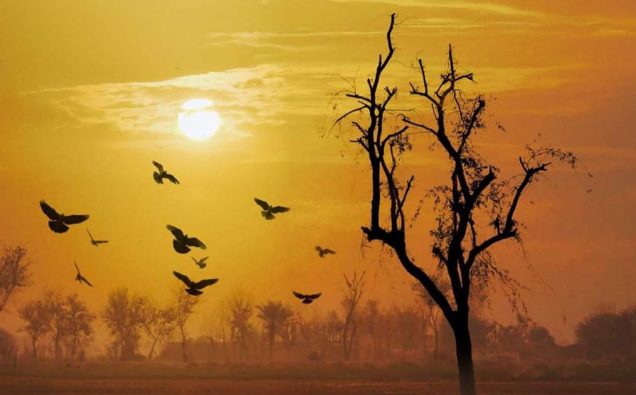
Hundreds of millions of Indians and Pakistanis living on the South Asian plains have had an early start to summer, when temperatures rocketed in March, normally a moderate springtime part of the year.
The heatwave is not just impacting everyday life, it is also threatening to hurt people economically, especially the farming communities looking to harvest wheat. A lower wheat crop for one-fifth of humanity in South Asia means Indians and Pakistanis will have to import the staple food, which is already being priced at higher rates due to the war in Ukraine. Russia and Ukraine are two of the biggest agricultural baskets in the world and export huge quantities of wheat every year.
Besides, the heatwave also offers a window into what the climate-affected future would be like in the years and decades to come.
The World Meteorological Organization says that “it is premature to attribute the extreme heat in India and Pakistan solely to climate change”. but the scenario is “consistent with what we expect in a changing climate”.
The Intergovernmental Panel on Climate Change (IPCC), in its recent Sixth Assessment Report, also warned that heatwaves and humid heat stress would be more intense and frequent in South Asia this century.
The WMO also notes that heatwaves are more frequent and more intense and started earlier than in the past.
The current heatwave was triggered by a high-pressure system and follows an extended period of above-average temperatures.
In Pakistan, the country’s weather department has warned that in the mountainous regions of Gilgit-Baltistan and Khyber Pakhtunkwa, the unusual heat levels would accelerate snow and ice melt, with the possibility of triggering glacial lake floods – or flash floods in vulnerable areas.
Higher temperatures have also been seen across Pakistan, with daytime temperatures likely to be between 5°C and 8°C above normal in large swathes of the country, the department said.
As a result, air quality has also deteriorated, and large swathes of land are at risk of fire outbreaks, it says.
Over the years both Pakistan and India have developed elaborate weather warning systems. Working closely with health and disaster management agencies, the national meteorological and hydrological departments in both countries, plan to roll out heat health action plans, which have been successful in saving lives in the past few years, the WMO notes.
Extreme heat has multiple and cascading impacts not just on human health, but also on ecosystems, agriculture, water and energy supplies, and key sectors of the economy.
The Geneva-based UN agency reiterated its commitment to “ensuring that multi-hazard early warning services reach the most vulnerable”.
Both Pakistan and India have successful heat-health early warning systems and action plans already in place, including those specially tailored for urban areas, it says.
They reduce heat mortality and lessen the social impacts of extreme heat, including lost work productivity.
Important lessons have been learned from the past and these are now being shared among all partners of the WMO co-sponsored Global Heat Health Information Network, to enhance capacity in the hard-hit region, WMO advanced.
In India, the Meteorological Department reported that maximum temperatures reached 43-46°C in widespread areas, on 28 April, and that this intense heat will continue until 2 May.
India recorded its warmest March on record, with an average maximum temperature of 33.1 ºC, or 1.86 °C above the long-term average.
Pakistan also recorded its warmest March for at least the past 60 years, with a number of stations breaking March records.
In the pre-monsoon period, both India and Pakistan regularly experience excessively high temperatures, especially during May.
















